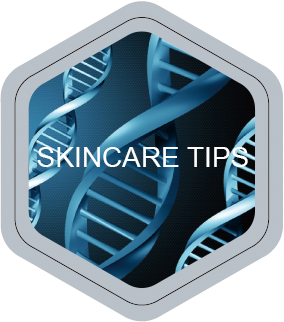


Combination skin: “When the skin looks oily all day, but at the same time there is flakiness and skin is rough to the touch. The more one tries to clean it, the dryer it becomes and the more oil it secretes.Statistics show that combination skin is more pervasive than most people imagine, but it appears in different degrees. If you have recognizable symptoms, you might consider changing your cleaning regimen. People with combination skin should keep diligent habits to promote the regeneration of the corneum layer in the epidermis. This allows your skin to maintain its water retention capacity better than when simply trying the so-called high moisturizing and low oil products.Oily, but dehydrated skin does not belong to any particular skin category, but rather, it is a sign of unhealthy skin. It is caused by human behaviors and environmental factors, so it can be improved.When washing the face, one washes away the topical skin oils (sebum) together with the lipids that saturate the epidermal layer. The sebaceous glands produce sebum around the clock, but the lipids within the epidermis cannot be replaced once they are lost. Without the natural lipid layer, the epidermis loses its capacity to defend against infection and retain water, while the sebum covers the surface, resulting in oily skin that is deeply dried out.People with such a skin condition must deep clean their skin, and regenerate their outer epidermal layer of skin. Applying large amounts of moisturizing essence may be refreshing, but it does not contribute to overall skin health.
MORE
In today’s world, many consumers are scared by preservatives. Businesses, on the other hand, may spread that fear while simultaneously claiming that their products are “additive-free and preservative-free.” But, are preservatives so fearsome? Are preservative-free products really safe? And how honest are the brands making such claims?
Preservative, as the term suggests, is a chemical compound made to preserve the product against contamination by microorganisms, molds, and bacteria over a relatively long shelf-life. The nutrients in skin care products are perfect nourishment for microorganisms, and the texture of most skin care products is a hotbed for bacteria. To prevent cosmetics from spoiling shortly after purchase, the use of some preservatives is both unavoidable and healthy. Fortunately, modern medicine has reveal safer preservatives and proper usage techniques so that any damage is negligible.
Many brands never officially claim that their products are preservative-free, but often do so indirectly through their salespeople. On one hand, this sidesteps the legal risk for the brand and the company, and on the other, it appeals to the unfounded fears of consumers.
Nevertheless, almost any product that contains preservatives, regardless of what claims are made, is still much safer than those without preservatives.
With modern technology, it is impossible to produce products that are simultaneously absolutely “preservative-free” and absolutely “safe.” MULAIN Cosmetics proposes the safest and most reliable solutions available given present technology:
1. Use only the safest preservatives;
2. Distribute in small-volume, low-capacity packaging;
3. Optimize for short preservation time, and suggest timely use after opening;
4. Design containers and packaging to limit contamination before and during use;
5. Produce all materials in a high-standard hygienic environment.
MORE
This may be the result of an inappropriately washed face.
Contrary to popular opinion, proper cleansing contributes 70% to the appearance of good skin, and maintenance contributes only 30%.“Bad” skin has different embodiment for people of different age groups. Teenagers are usually troubled by blisters, bulky pores, acnes, dry peeling or excessive oiliness. Those in their 20’s and 30’s usually suffer dry flakiness, rough skin, bulky pores, and grease. People beyond that age are more often vexed by coarse and dark skin, spots, wrinkles, and a thick outer skin layer.In managing all sorts of skin problemswhatever skin care product you choose, whatever ingredient they contain, and whatever effect they claim-the first crucial step is the same: cleaning.Washing your face with care can guarantee you healthy skin. The importance of cleansing may be beyond many people’s expectation, even some brand salespersons. To ensure proper cleansing, it is critical to master the correct way to use a good facial wash.The key to skin cleaning is to remove the burdens on the skin while not creating new ones. If after cleaning, your skin feels dry and tight, then it means that too much natural oil has been removed from the outer layer of skin, creating a new problem. Some oils in the skin play an important role in the health of your skin, so it is normal to feel some oil on the face after wash. Such feeling does not mean that you have not thoroughly cleaned your face.Therefore, the choice of quality facial wash is essential. According to the statistics from Mulain’s research, amino acid is the best agent to clean the skin without harming it. The skin can maintain its best condition to absorb supervening nutrients after amino acid facial wash, forming a benign cycle.
MORE
Many consumers think that the use of toner after facial wash can further clean their skin. Many frequently purchase large quantities of toner and cotton applicator pads, hoping to clean their skin.If you can wipe grime off with cotton pads after washing your face, then it means you have not properly cleaned your face, and you should alter your cleansing technique.Those facial toners that claim they can give your skin an additional clean inevitably contain a high concentration of solubilizing agents or alcohol. When at a high concentration, those can do much more harm than the benefit from any secondary cleaningWhen selecting a toner, take note of indicators for a safe choice: no smell of alcohol, no obvious bubbles form when shaken, little fragrance, and little pigment. Toners that meet these criteria are the safest skin maintenance products.
MORE
Most people, whatever their age or skin condition, have sensitive skin. It is mostly a question of what degree. Skin can become dry and flaky as a result of the climate, hormones, skin care products or exposure under the sun. One might also have allergic reaction resulting in itching, swelling, and reddening because of cosmetics, pets, dust, and pollen.Everyone has the potential for sensitive skin, so everyone should try to prevent outbreaks and irritation. There is only one rule: whether you have oily, dry or normal skin, treat it as tenderly as possible, and avoid any stiMulaints.While limited number of stimulants are used medicinally (such as in local sterilization for acne, salicylic acid for black heads, α-hydroxy acids for exfoliating), all other stimulants are harmful to the skin.If you unfortunate enough to have an allergic reaction, you should treat it with patience. Do not use cosmetics or other skin care products until the symptoms have completely subsided. Try to keep your skin care as simple as possible. Use only gentle cleansing products and apply moisturizer to only the most dry areas of your skin. Apply a steroid ointment to relieve the inflammation and keep away from the sun.Even after allergic symptoms have alleviated, you should try to determine the product or component that caused the allergy, and avoid using it.
MORE
In terms of purpose, masks can be classified into those for cleansing and those for skin maintenance.
Masks for cleansing – whether comprised of mud, powder, or even wet wipes and transparent gel – require the face be thoroughly cleaned with a facial wash before use. The function of cleansing masks is cleansing, so there is no need to pay close attention to the nutrients. For the purpose of cleansing, cleansing masks on a daily basis is not too much. What is essential is that the product should be safe and not stimulate the skin.
With masks for skin maintenance, it is best to choose one that does not require rinsing off after use, because they are more cost-effective. Washing your face after using a deep maintenance mask wastes nutrients before they can be absorbed. Skin maintenance masks do not need to be applied daily because human skin can only absorb a limited amount of nutrients in a period of time. It is best to give skin time to breathe and recuperate after the absorption to achieve the best skin maintenance effect. Therefore, you should apply a mask one to three times a week, depending on the condition of your skin.
One point is particularly important to take note of. Maintenance masks made from mud are especially prone to bacteria and microorganisms. The nutrients and particle surface are in mud is an ideal place for bacteria to multiply. Thus, such masks have high requirements for preservatives in terms of both quantity and quality. It is recommended that customers pay careful attention to these concerns when purchasing mud packs.
MORE